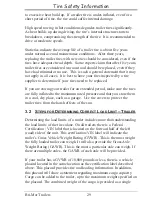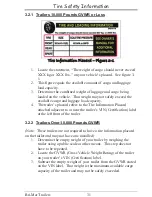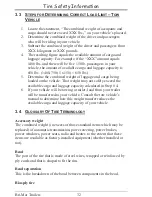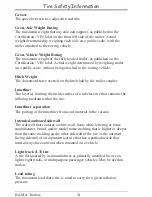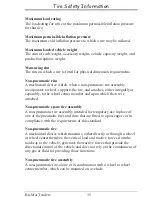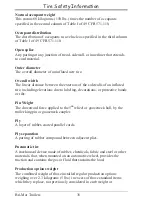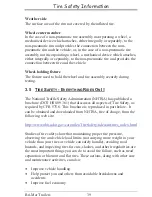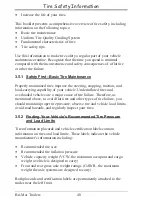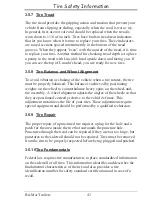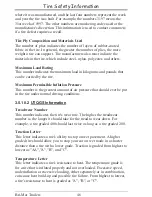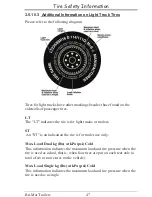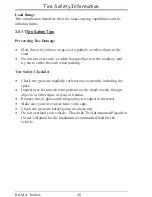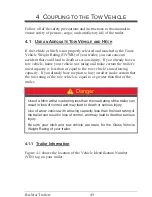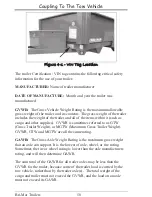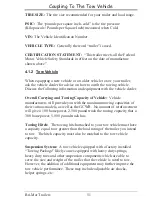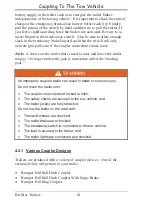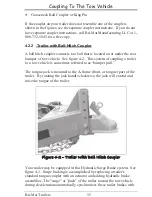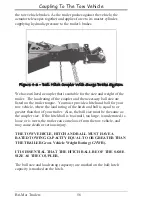
Tire Safety Information
Bri-Mar
41
3.5.3 Understanding Tire Pressure and Load Limits
Tire inflation pressure is the level of air in the tire that provides it with
load-carrying capacity and affects the overall performance of the vehicle.
The tire inflation pressure is a number that indicates the amount of air
pressure– measured in pounds per square inch (psi)–a tire requires to be
properly inflated. (You will also find this number on the vehicle
information placard expressed in kilopascals (kPa), which is the metric
measure used internationally.)
Manufacturers of passenger vehicles and light trucks determine this
number based on the vehicle's design load limit, that is, the greatest
amount of weight a vehicle can safely carry and the vehicle's tire size.
The proper tire pressure for your vehicle is referred to as the
"recommended cold inflation pressure." (As you will read below, it is
difficult to obtain the recommended tire pressure if your tires are not
cold.)
Because tires are designed to be used on more than one type of vehicle,
tire manufacturers list the "maximum permissible inflation pressure" on
the tire sidewall. This number is the greatest amount of air pressure that
should ever be put in the tire under normal driving conditions.
3.5.4 Checking Tire Pressure
It is important to check your vehicle's tire pressure at least once a month
for the following reasons:
•
Most tires may naturally lose air over time.
•
Tires can lose air suddenly if you drive over a pothole or other object
or if you strike the curb when parking.
•
With radial tires, it is usually not possible to determine
underinflation by visual inspection.
For convenience, purchase a tire pressure gauge to keep in your vehicle.
Gauges can be purchased at tire dealerships, auto supply stores, and other
retail outlets.
The recommended tire inflation pressure that vehicle manufacturers
provide reflects the proper psi when a tire is cold. The term cold does not
relate to the outside temperature. Rather, a cold tire is one that has not
been driven on for at least three hours. When you drive, your tires get
Trailers
Summary of Contents for DT508LP
Page 144: ...Electrical Drawings Bri Mar 138 Trailers...
Page 145: ...Bri Mar 139 9 ELECTRICAL DRAWINGS Trailers...
Page 146: ...Bri Mar 140 Trailers...



